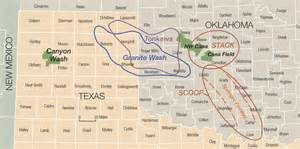As Oklahoma’s two popular and fast-growing oil plays, the STACK and the SCOOP generate high interest in the oil and gas industry, the Oklahoma Corporation Commission announced Tuesday new seismicity rules that will apply to the region…..rules aimed at preventing a sudden growth in earthquakes. And this time, state regulators are linking possible earthquake activity directly to fracking and not to wastewater injection wells.
The rules were developed in part with the Oklahoma Geological Survey where Director Dr. Jeremy Boak says both old and new data have prompted a plan now to mitigate earthquake risk in the SCOOP and STACK.
“Then-state seismologist Austin Holland did some work on small earthquakes some years ago in what is now widely known as the SCOOP and STACK and showed some of them might have been related to hydraulic fracturing,” said Boak. “More recent small events outside the Area of Interest might also be linked to hydraulic fracturing.”
He said the data suggests such seismic activity would be far less frequent and lower in magnitude than the main area of earthquake activity in the state linked to wastewater injection wells.
“Unlike the strong earthquake activity in areas of the Area of Interest linked to disposal activity, response to seismic activity that might be related to hydraulic fracturing can be more precisely defined and rapidly implemented,” added Boak.
Tim Baker, Director of the Corporation Commission’s Oil and Gas Conservation Division said the good news is that the two oil plays are not capable of generating huge amounts of wastewater.
“Production from the Mississippian Limestone and Hunton Dewater Play operations within the 15,000 square mile earthquake Area of Interest has resulted in unprecedented amount of salt water which was already in the formation coming up with the oil and natural gas,” said Baker. “That produced water is put back underground using disposal wells. There is broad agreement among researchers that disposal of these large amounts of water into the state’s deepest formation can be linked to the high earthquake rate in parts of the AOI.”
Under the new rules, if an earthquake greater than or equal to 2.5 magnitude occurs within 1.25 miles of hydraulic fracturing operations, the internal mitigation practice of the operator will begin and operations will continue.
If there’s a quake greater or equal to 3.0 magnitude, there will be a pause of operations for no less than 6 hours by the operator. There will also be a conference call between the Corporation Commission staff and the operator. If reduced seismic activity follows, the operator could be allowed to resume operations with revised completion procedure.
Any quake greater than or equal to 3.5 magnitude will result in immediate suspension of fracking operations and OCC staff and the operator at that point will discuss whether continued operations will be allowed.







